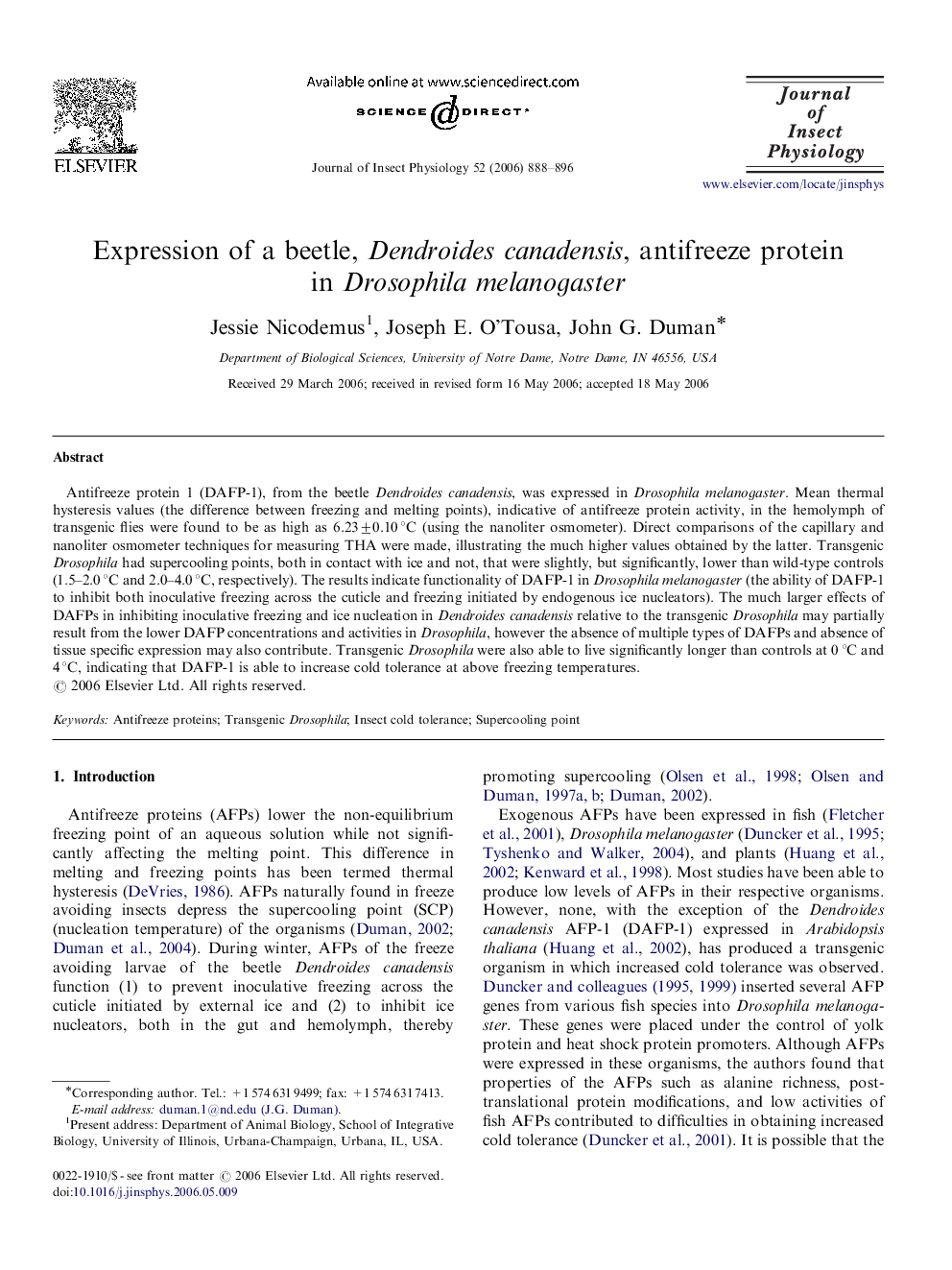| Article ID | Journal | Published Year | Pages | File Type |
|---|---|---|---|---|
| 2841773 | Journal of Insect Physiology | 2006 | 9 Pages |
Antifreeze protein 1 (DAFP-1), from the beetle Dendroides canadensis, was expressed in Drosophila melanogaster. Mean thermal hysteresis values (the difference between freezing and melting points), indicative of antifreeze protein activity, in the hemolymph of transgenic flies were found to be as high as 6.23±0.10 °C (using the nanoliter osmometer). Direct comparisons of the capillary and nanoliter osmometer techniques for measuring THA were made, illustrating the much higher values obtained by the latter. Transgenic Drosophila had supercooling points, both in contact with ice and not, that were slightly, but significantly, lower than wild-type controls (1.5–2.0 °C and 2.0–4.0 °C, respectively). The results indicate functionality of DAFP-1 in Drosophila melanogaster (the ability of DAFP-1 to inhibit both inoculative freezing across the cuticle and freezing initiated by endogenous ice nucleators). The much larger effects of DAFPs in inhibiting inoculative freezing and ice nucleation in Dendroides canadensis relative to the transgenic Drosophila may partially result from the lower DAFP concentrations and activities in Drosophila, however the absence of multiple types of DAFPs and absence of tissue specific expression may also contribute. Transgenic Drosophila were also able to live significantly longer than controls at 0 °C and 4 °C, indicating that DAFP-1 is able to increase cold tolerance at above freezing temperatures.
